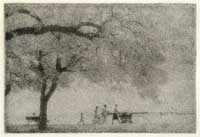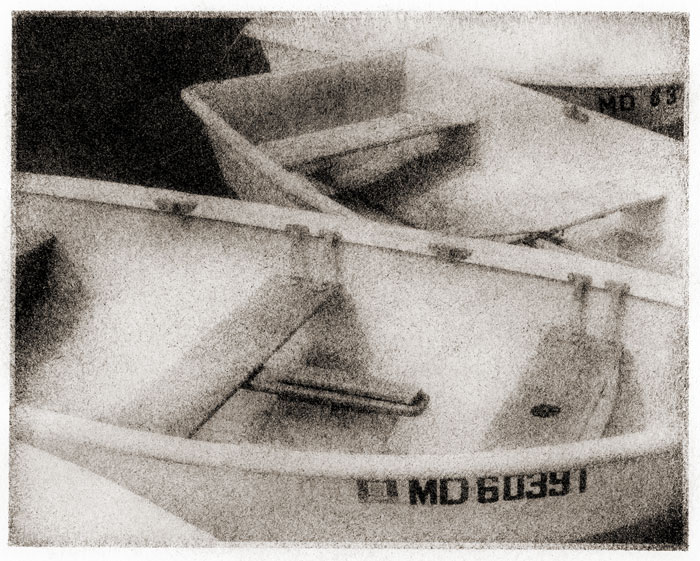Despite an apparent resurgence of interest in traditional film photography, digital imaging is quickly pushing silver gelatin print creation into the miscellaneous category known as alternative processing. Those of us who have spent a lifetime working with this traditional process may feel a sense of loss, but the truth of the matter is that it can open a new set of possibilities.
For years I have worked with the Bromoil process, which was first popularized about one hundred years ago. Other than the silver gelatin process, it is the only alternative process that allows for projection, as opposed to requiring direct contact of the negative with the paper. As many people have never seen a Bromoil print (I had not seen one at the time I started making them), I will first explain what a Bromoil print is, then explain how current technology can facilitate the process.
The creation of a Bromoil print involves a number of steps. The first is the creation of a traditional darkroom print, but that is used as a guide print to reference at a later time.
A second print is made, normally exposed twice as long as the guide print under the enlarger, and given a grade less contrast. This is the print that will eventually become a Bromoil, but must first be dried overnight.
The following day the print is bleached and tanned. Typical photographic bleaches merely remove the silver from the print, but the type used in this process also tans the print. This means that it hardens the emulsion relative to the amount of silver that was in the print. Areas that held shadow values will have the emulsion hardened considerably, whereas the highlights will have had the emulsion hardened very lightly. The paper must then be dried again overnight.
Finally the print can be inked. To begin, it is first soaked in water for about 15 minutes. This allows water to saturate the emulsion, and will do so relative to its hardening - the softer the emulsion, the more water that area of the print will hold, the harder the emulsion the less water that area can hold.
The paper is then removed from the soak and all surface water is removed, so the only water remaining is within the emulsion. It is laid on a sheet of glass to keep it flat and provide a hard backing. A stiff brush, often made with hog's hair, is tapped on ink-covered tile to charge it with ink, and then with various tapping motions of the brush, the ink is transferred to the paper. As this is done, the highlight areas (where the emulsion holds the most water) reject the ink, while the shadow areas (holding little water) accept the ink. Eventually the paper will dry out and need to be resoaked before more ink can be properly applied.
After several thousand taps of the brush on the paper, the image is ready to be dried, touched up, and displayed.
Digital technology, for me, has an important place to play in the process. As time goes on, the number of papers that can be used with the Bromoil process become fewer and fewer. Older papers, like Kodak Ektalure and Agfa MCC118 are no longer produced, so old stocks become more and more dear. The last thing I want to do is to waste any of this precious stock with test strips and errant exposures.
The ability to create a digital negative means that I can contact print any image that I have taken. Equally important, as a paper like Kodak Ektalure is a single contrast paper, as long as I have matched a curve for it, what I see on my monitor can be reproduced in the darkroom.
The take-away is that a new technology can open capabilities with older technologies. In my own particular case, I will not only be able to create more Bromoil images from my stock before having to rely on more modern, and less capable, papers, but since I do not have to run tests before making a final print, I can be more productive with this time consuming, labor intensive process.


